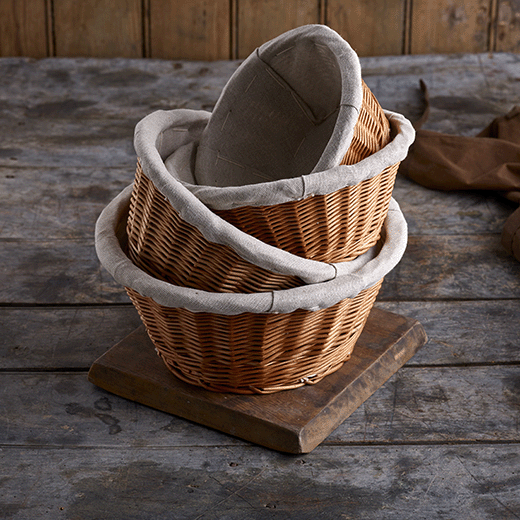Baskets & Proofing

Essential for all bread making is dough proofing, or dough rising as the yeast in the dough works away producing carbon dioxide gas which puffs up the dough making it rise. (Soda bread in an exception which does not use yeast but bicarbonate of soda instead). Standard yeasted dough and sourdough both rise with the use of yeast, generally through a first rise in a mixing bowl or dough box and then again after shaping in a proofing basket for free-form loaves, in a tin or using couche proofing cloth linen for artisanal baguettes.


What are proofing baskets for?
Proofing baskets ("banneton" in French or "brotform" in German) come in a variety of styles and materials. They are designed to support loaves to be baked free-form, that is, without a tin, during the final proof before being baked. The dough is shaped then dusted liberally with flour, we like rye flour for this, and then put inverted into the proofing basket where it is left to rise until just under doubled in volume. At this point the dough is ready to be baked and can be gently tipped into a cloche, covered baker or placed on to a hot baking stone usually by sliding the dough into an oven using a bread peel.
Do I need a proofing basket liner?
Proofing basket liners mostly used for the cane baskets of bannetons mostly to keep ingredients that might stain or taint the basket for its next use, for example garlic or tomatoes. If not worried about staining of the basket, they may be used without a liner and will build up a flour coating which makes dough release easier. Excess build-up of flour or dough can be brushed out. Of course baskets like the wicker ones with already sewn-in linen liners don't need an additional basket liner.




















